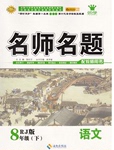题目内容
Can you understand the beginning of this article?
“My smmr hols wr CWOT. B4, we usd 2go2 NY 2C my bro, his GF & 3 kds FTF.”
The Scottish teacher who received it in class had no idea what the girl who wrote it meant. The essay was written in a form of English used in cell phone text messages. Text messages (also called SMS2) through cell phones became very popular in the late 1990s. At first, mobile phone companies thought that text messaging would be a good way to send messages to customers, but customers quickly began to use the text messaging service to send messages to each other. Teenagers in particular enjoyed using text messaging, and they began to create a new language for messages called texting.
A text message is limited to 160 characters, including letters, spaces, and numbers, so messages must be kept short. In addition, typing on the small keypad of a cell phone is difficult, so it’s common to make words shorter. In texting, a single letter or number can represent a word, like “r” for “are,” “u” for “you,” and “2” for “to.” Several letters can also represent a phrase, like “lol” for “laughing out loud.” Another characteristic of texting is the leaving out of letters in a word, like spelling “please” as “pls.”
Some parents and teachers worry that texting will make children bad spellers and bad writers. The student who wrote the essay at the top of this page said writing that way was more comfortable for her. (The essay said, “My summer holidays were a complete waste of time. Before, we used to go to New York to see my brother, his girlfriend, and their three kids face to face.”)
Not everyone agrees that texting is a bad thing. Some experts say languages always evolve, and this is just another way for English to change. Other people believe texting will disappear soon. New technology for voice messages may soon make text messages a thing of the past.
【小题1】What is the writer’s opinion of text messaging?
| A.It is fun and easy to do. |
| B.It is not bad for children. |
| C.It will make children bad writers. |
| D.The writer does not give an opinion. |
| A.Using phrases to represent essays |
| B.Using numbers to represent words |
| C.Using letters to represent phrases |
| D.Using letters to represent words |
| A.My Gr8 Tchr | B.CU in LA | C.My GF | D.My Smmr Hols |
| A.It has been replaced by voice message |
| B.It’s too difficult to type. |
| C.Teenagers won’t learn to write correctly. |
| D.It’s not comfortable. |
| A.Not many people use texting. |
| B.Spelling in English is too difficult. |
| C.Teenagers quickly become bored with texting. |
| D.Texting will disappear because of new technology. |
【小题1】D
【小题2】A
【小题3】D
【小题4】C
【小题5】D
解析

 优学名师名题系列答案
优学名师名题系列答案Excuse me, but can you tell me what UN in your papers ________?
| A.stands up | B.stands for | C.stands out | D.stands up for |
阅读下列材料及相关信息,从所给的六个选项(A、B、C、D、E、F)中,选出符合各小题要求的最佳选项。选项中有一项是多余选项。以下是演讲会的资料:
|
A Are you interested in “Dream of the Red Mansion”(Hong Lou Men)? Listen to a lecture on this classical novel. Venue: National Museum of Chinese Modern Literature (Beijing) Time: 9:30 A.m. Price: free Tel: 010 – 84615522 |
B “Jiaguwen” is among the oldest pictographic characters in the world.How much do you know about it? Get all the answers at this free lecture. Venue: Dongcheng District Library (Beijing) Time: 9:00 A.m. Price: free Tel: 010 – 64013356 |
|
C Former United Nations interpreter Professor Wang Ruojin speaks about her experiences at the UN and shares her understanding of the cultural differences between East and West. Venue: National Library of China (Beijing) Time: 1:30 p.m. – 4:00 p. m. Price: free Tel: 010 – 68488047 |
D Qi Baishi, one of China’s greatest modern painters, was also a poet, calligrapher(书法家) and seal-cutter(刻印者). Can you appreciate his works? Then come to spend the time with us. Venue: Beijing Art Academy Time: 9:00 A.m. – 11:00 A.m. Price: 10 yuan Tel: 010 - 65023390 |
|
E It is the year of the Dog, and you can see “Fu” everywhere. But how much do you know about dogs – man’s best friend? What is “Fu” and where does it come from? Why do people hang “Fu” character upside down on the door? Get all the answers from this free lecture. Venue: Capital Library (Beijing) Time: 2:00 p. m. Price: free Tel: 010 - 67358114 |
F About 160 cultural relics from Guangdong, Macao and Hong Kong are on display to April 15th. Meanwhile experts will talk about the important roles these three cities have played in the past two thousand years of Sino–Western exchanges. Venue: Beijing Art Museum Time: 2:00 p. m. – 5:00 p. m. Price: 20 yuan, students 10 yuan Tel: 010 - 83659337 |
以下是想去听演讲的人员的基本信息,请匹配适合他们的演讲内容。
1. Alice is now studying in Beijing University, and she is especially interested in Chinese writing. In her spare time she enjoys drawing, writing poems and is fond of sharing her pieces with her classmates.
2. Simon comes from Egypt. He is now studying in Beijing Art Academy. He shows great interest in Chinese ancient characters. Now he wants to know much about it.
3. Lora and Peter, visiting professors from Australia, are both crazy about Chinese traditional culture. At weekends they like to call on Chinese families to learn about Chinese festivals as well as their history.
4. Edward is a senior student in Beijing Foreign Language University. He likes traveling very much and has made up his mind to work as an interpreter for some joint–venture enterprises (合资企业).
5. Steve and Mark are both studying in the Chinese Department of China’s Renmin University. They want to do some research on Chinese ancient literature.